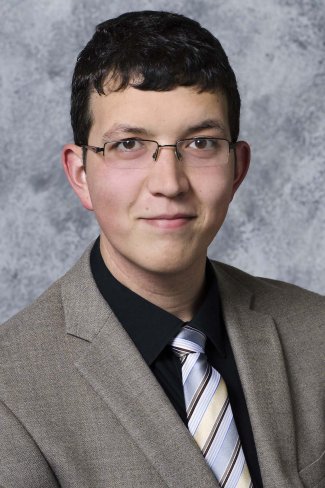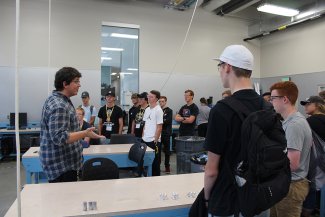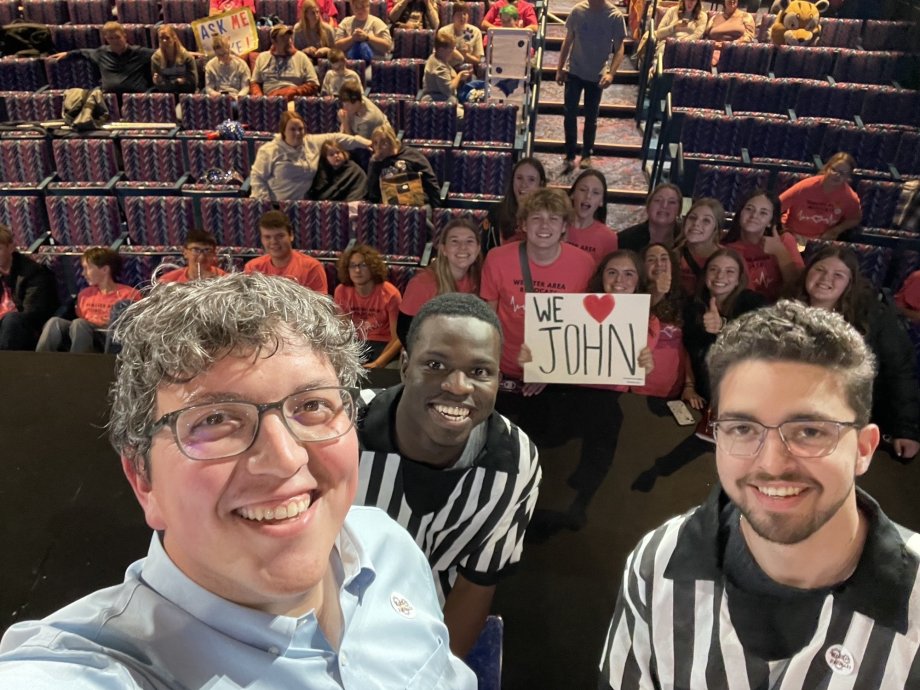When it comes to undergraduate instruction in South Dakota State University's Jerome J. Lohr College of Engineering, John VerSteeg, a Department of Mechanical Engineering faculty member, is consistently cited as being one of the students’ favorite instructors. What's the secret to his popularity?

In South Dakota State University's Jerome J. Lohr College of Engineering, there is a crucial two-semester period for students majoring in mechanical engineering — one of the university's most popular majors. During the end of their second year in the program, most students take thermodynamics I — a course that starts a transitional period from learning conceptual engineering topics to applying those concepts to real-life engineering problems.
John VerSteeg is the primary instructor for Thermodynamics I and II — collectively known as "thermo" to students. VerSteeg is an 11-year veteran in the Lohr College of Engineering and understands just how important it is for engineering students to understand, and excel, in the topics and problems presented in Thermo.
"Everything is thermodynamics," VerSteeg said. "To become a mechanical engineer, you have to have a strong grasp of the laws of thermodynamics."
In the Lohr College of Engineering, students will take thermo in back-to-back semesters, which means a cohort of 30 to 40 students will have VerSteeg as an instructor for nearly a full year.
"I'll have the same group of students together for an extended period," VerSteeg said. "This is a great opportunity to engage them in the material and foster study habits and groups that will help them in both my classes and the future classes they take here at SDSU."
VerSteeg aims to create a welcoming and comfortable environment for students, one in which they participate without fear of failure. This is one of the trademarks of VerSteeg's courses and is routinely cited by students as one of the keys to success in the often-challenging thermodynamics courses.
"After three classes with (VerSteeg), I can come up with about a hundred things that John does well when he teaches, but a few things stand out," SDSU undergraduate Kathleen Pattee said. "John is very intentional about creating an environment where students will be comfortable asking questions and participating in solving the example problems."
According to Pattee, VerSteeg does this through a "less formal" teaching style and by knowing each student's name. He learns his students’ names each day in class through what he calls "the name game."
"He does this so he can check in with them on how things are going throughout the semester," Pattee said.
In class, VerSteeg avoids pure lecturing as much as possible, instead opting to work through real-world problems as a full group. He also utilizes his admittedly "dry" season of humor to keep classes fun and engaging.
"He makes his lectures interesting by creating realistic problems to work through," Pattee added. "He also provides more information than strictly what the class covers for students who are curious."
VerSteeg also utilizes data to continuously improve his coursework. Often, he finds himself tweaking how to explain certain concepts on a year-to-year basis. The effort he puts into his teaching and classes does not go unnoticed by his students.
"I've only had John as a professor for one semester, but he has stood out," SDSU undergraduate Aaron Seberger said. "His class, more than any class I've taken, is very difficult and requires copious amounts of studying. That information usually makes a professor less desirable, but the opposite is true for John."

VerSteeg's teaching style was influenced by his own experiences in SDSU's Department of Mechanical Engineering, particularly with Gregory Michna, a longtime faculty member in the department.
"I had the pleasure of John enrolling in one of my classes during each of my first four semesters as a faculty member here at SDSU," Michna, an associate professor in the department, said. "John is an excellent teacher. He uses evidence-based teaching methods to share with students not only the thermo-fluids material that he teaches but also his enthusiasm for the topic."
A Mitchell native, VerSteeg graduated from SDSU in 2011 with a bachelor's degree in mechanical engineering. Rather than enter private industry, he decided to stick around Brookings and continued his academics. While pursuing a master's degree in mechanical engineering, he was recruited by Michna to work in his heat transfer research lab. During this time, VerSteeg also worked as Michna's graduate teaching assistant. This is precisely when he found a new passion: teaching.
"John was an outstanding student, so of course I jumped at the opportunity to work with him as a graduate student," Michna said. "I was similarly excited when he joined our department as a faculty member."
After earning his master's in 2013, VerSteeg was hired as a mechanical engineering instructor and has since transitioned to a lecturer. Now, VerSteeg has established himself as a key cog in the engineering experience at SDSU.
"John puts a large amount of effort into making sure you are graded based on how well you know the material as a whole rather than how well you know a few equations that will be on the exam," Seberger said. "He understands how college students function and utilizes that knowledge to make one of the hardest classes one of the most enjoyable."

"One of my favorite parts of teaching is interacting with and helping students," VerSteeg said. "Seeing that lightbulb moment when they 'get it' is very rewarding."
Outside of Thermo, VerSteeg teaches two other courses: Fluid Mechanics (EM 331) and Mechanical Design Technologies (ME 212).
Off campus, home improvement projects keep VerSteeg and his wife busy.
- Contact:
- Telephone number: 605-688-6161
Republishing
You may republish SDSU News Center articles for free, online or in print. Questions? Contact us at sdsu.news@sdstate.edu or 605-688-6161.

